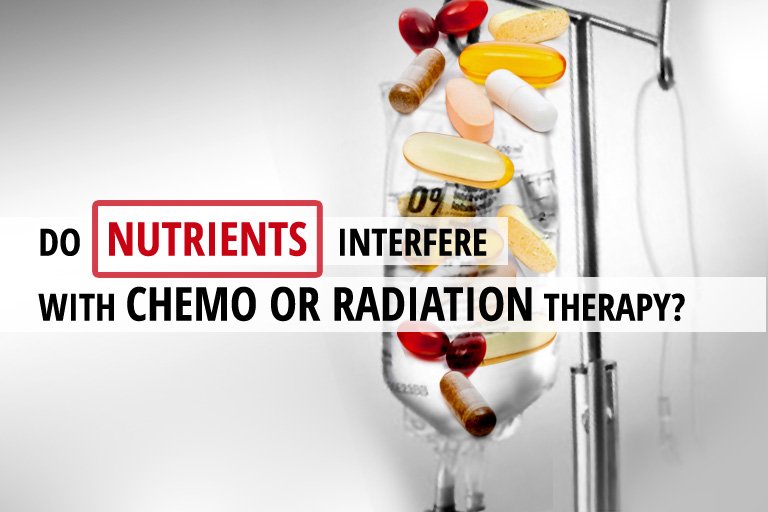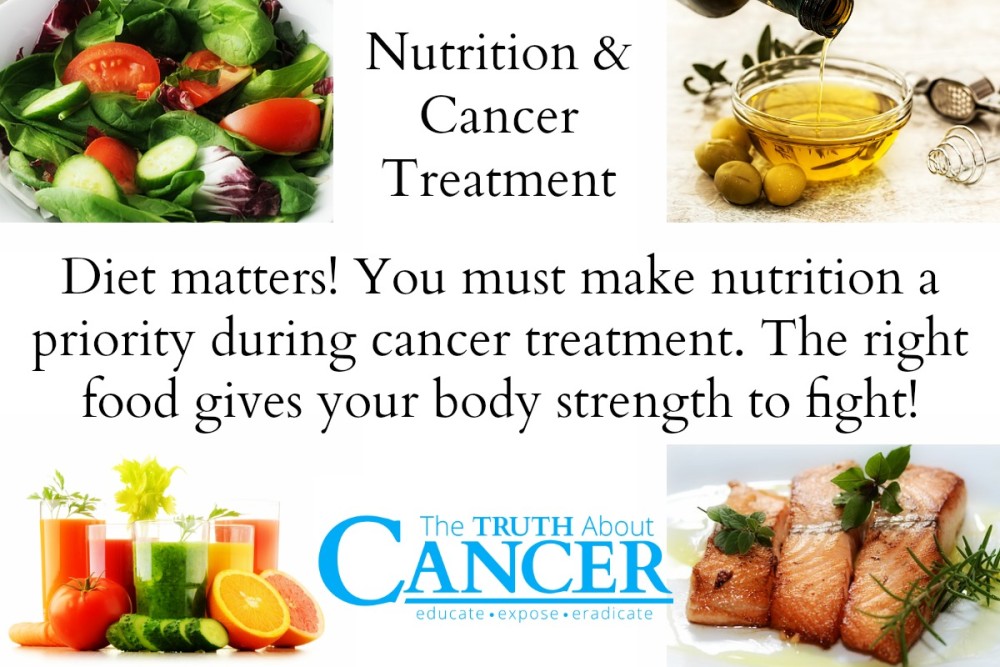“God heals and the doctor takes the fee.” ~ Benjamin Franklin
Laura N. was tearful when I met with her at the clinic near San Diego, California. She had completed 10 cycles of cisplatin, a highly toxic chemo drug for her ovarian cancer and started having symptoms of painful peripheral neuropathy, or pain, in her hands. While vitamin E has the capacity to significantly reduce this type of nerve damage before the chemo drug is administered, little can be done after the fact.
Cancer patients often feel like a child in a wicked divorce custody battle. The oncologist tells the patient, “Don’t take that nutrition therapy, it is nothing more than expensive urine and it will reduce the effectiveness of my chemo and radiation therapies.” Meanwhile the nutritionist tells the same patient “Don’t take that poisonous chemo or radiation therapy, it will do you no good.”
If the oncologist and nutritionist work together, both would realize a higher success rate in treating their patients. Nutrients enhance the effectiveness of medical therapy against the tumor while reducing the toxicity.
Should Cancer Patients Take Supplements?
This subject is one of the more hotly contested areas of cancer treatment. Most of the 10,000 board certified oncologists in America labor under the illusion that antioxidant nutrients will reduce the effectiveness of eradicating the tumor using chemo or radiation. However, the evidence is overwhelmingly favorable to nutrients and traditional treatments working together in a symbiotic relationship.
Meanwhile, those same doctors often prescribe Mesna and other pharmaceutical versions of vitamins C and E with the goal of reducing the toxic side effects of chemo and radiation treatments. Mesna and similar drugs have demonstrated their ability to reduce damage to the patient while allowing the chemo and radiation to kill cancer cells, creating a “win-win” scenario.
Unfortunately, hundreds of thousands of cancer patients are not being supplemented with antioxidant nutrients to prevent toxic side effects, such as nausea, gastro intestinal harm, peripheral neuropathy (damage to nerves in the hands and feet), and the suppression of blood cell production (red, white and platelets). Many of these cancer patients end up with unnecessary symptoms… all due to this myopic area of oncology.
Reviews by Drs. Simone (same oncologist who treated former vice president Hubert Humphrey) reveal that nutrients do NOT interfere with chemo or radiation; rather they usually enhance the patient’s quality of life and provide better statistics for partial and complete remissions.
http://www.drsimone.com/Antioxidants_Part_I.pdf
http://www.drsimone.com/SimoneVitWithChemo.pdf
Dr. Keith Block has another review of the world’s scientific literature on the subject of chemo, radiation and nutrients co-administered. The resounding conclusion is: nutrients help, and never hinder cancer treatment.
Side Effects of Chemotherapy
Chemotherapy targets rapidly growing cells, some of which are cancer cells, but a significant number are healthy cells. The following list outlines more side effects:
- Cells lining the stomach and intestines are usually harmed by chemo resulting in nausea and poor digestion.
- The bone marrow generates red blood cells to carry oxygen, white blood cells to fight infections and cancer and platelets are needed for clotting the blood at the wounded area. All of these cells can be reduced to nearly lethal levels with some cancer treatment protocols.
- Nerve damage leads to painful peripheral neuropathy which may require narcotics to control the pain.
- Muscle damage affects the heart and can lead to a heart attack.
- Damage to the ovaries and testicles can cause sterility.
- And worst of all is the possibility of a secondary tumor, most likely a lymphoma or leukemia.
All of these hazards are considered acceptable when using chemo to fight cancer, even though the most optimistic oncologist will tell you that chemo does not cure cancer (except in rare cancers such as some childhood leukemias and testicular cancer).
Given the hazards of chemo, it is ironic to hear the oncologists say “first do no harm” when they tell the patient to avoid nutrients while taking chemo, in the unlikely situation that the nutrients inhibit the cancer killing capacity of the drugs.
Free Radicals vs Antioxidants
Linus Pauling, PhD, earned one of his Nobel prizes in chemistry in the 1950s by discovering how atoms bind together to become molecules. Consider this analogy: Picture the Earth, Saturn, and Mars − among other planets − orbiting around the Sun. Atoms and molecules are similar to a miniature rendition of our solar system. Electrons orbit the nucleus of an atom like planets orbit around the sun. Atoms bind together, such as hydrogen and oxygen, to yield water by sharing electrons, as hypothetically two suns come together and shared planets or moons to complete their configuration.
Now imagine if a planet was missing from a solar system. There would be an imbalance in forces that causes the system to become unstable. Free radicals, or pro-oxidants, are like unstable solar systems, because they lack an electron in their outer orbit.
Free radicals will grab an electron from a nearby molecule to make itself stable while rendering the robbed molecule unstable. And on it goes in domino fashion, disrupting biochemicals until tissue damage occurs and cancer or premature aging ensues. Though there are many variations of pro-oxidants and antioxidants (see table below), the results are recurring: pro-oxidants destroy tissue, while antioxidants protect tissue.
Oxygen, hydrogen peroxide (which our bodies continually create ), air pollution (ozone), tobacco smoke, most chemotherapy drugs, radiation therapy, and alcohol are among the more common and noteworthy free radicals in nature. Chemo and radiation are free radicals that work, hopefully, by killing more cancer cells than healthy cells.
We are constantly “rusting” from within, just like a nail rusts outside. We can slow down this rusting with antioxidants, such as vitamin C and lipoic acid, but we cannot stop it completely.
Basically, free radicals are electron (planet) thieves, and antioxidants, such as vitamin C, are electron donors. Antioxidants perform like a sacrificial warrior, giving up their life so that your tissue is protected. However, in an anaerobic environment, such as cancer, antioxidants can become pro-oxidants.
Vitamin C can become a targeted anti-cancer agent because it resembles the preferred fuel of cancer − glucose − and is abundantly absorbed. In the anaerobic environment, ascorbic acid converts to a powerful pro-oxidant and destroys the cancer cell… but only the cancer cells, since healthy cells have built-in mechanisms for absorbing the right amount of vitamin C along with a “symphony” of other antioxidants.
Researchers “assume” that antioxidant nutrients (such as coenzyme Q, glutathione, and vitamin E) will reduce the tumor kill rate from chemo and radiation. In simplistic chemistry, one might think this to be true. However, in test tubes (in vitro), with animals and human patients, such is not the case. Since cancer is usually an oxygen-deprived tissue, or anaerobic cell, the cancer cell has very poor mechanisms for absorbing proper amounts of antioxidants. A cancer cell has no more use for antioxidants than a gopher needs sunglasses. The exception is vitamin C, which is remarkably similar in chemical structure to glucose, cancer’s favorite food.
Antioxidants have been shown to dramatically improve the tumor kill rate from pro-oxidative chemo and radiation, while protecting the host tissue from damage. Cancer cells are primarily anaerobic (meaning “without oxygen”) cells. With the exception of vitamin C, cancer cells do not absorb nor use antioxidants the same way as healthy aerobic cells. Vitamin C (ascorbic acid) is nearly identical in chemical structure to glucose. When researchers found that radioactively labeled ascorbic acid was preferentially absorbed by implanted tumors in animals, they admitted that this effect is due to cancer having many more glucose receptors on its cell surface than healthy cells. Antioxidants protect healthy tissue, but leave the cancer cells more susceptible to chemo or radiation damage.
Nutrients Cancer Patients Should Consider
-
VITAMIN K
While in simplistic theory, vitamin K might inhibit the effectiveness of anticoagulant therapy (coumadin), actually vitamin K seems to augment the anti-neoplastic activity of coumadin. In a study with human rheumatoid arthritis patients given methotrexate, folic acid supplements did not reduce the antiproliferative therapeutic value of methotrexate.1 In one study, patients with mouth cancer who were pre-treated with injections of K-3 prior to radiation therapy doubled their odds (20% vs. 39%) for a 5-year survival and disease-free status.2 Animals with implanted tumors had greatly improved anti-cancer effects from all chemotherapy drugs tested when vitamins K and C were given in combination.3 In cultured leukemia cells, vitamins K and E added to the chemotherapy drugs of 5FU (fluorouracil) and leucovorin provided a 300% improvement in growth inhibition when compared to 5FU by itself.4 Animals given methotrexate and K-3 had improvements in cancer reversal, with no increase in toxicity to the host tissue.5
-
VITAMIN C
Tumor-bearing mice fed high doses of vitamin C (antioxidant) along with adriamycin (pro-oxidant) had a prolonged life and no reduction in the tumor-killing capacity of adriamycin.6 Lung cancer patients who were provided antioxidant nutrients prior to, during, and after radiation and chemotherapy had enhanced tumor destruction and a significantly longer life span.7 Tumor-bearing mice fed high doses of vitamin C experienced an increased tolerance to radiation therapy without reduction in the tumor-killing capacity of the radiation.8
-
FISH OIL
A special fat in fish (eicosapentaenoic acid, EPA) improves tumor kill in hyperthermia and chemotherapy by altering cancer cell membranes for increased vulnerability.9 EPA increases the ability of adriamycin to kill cultured leukemia cells.10 Tumors in EPA-fed animals are more responsive to Mitomycin C and doxorubicin (chemo drugs).11 EPA and another special fat from plants (gamma linolenic acid, GLA) were selectively toxic to human tumor cell lines while also enhancing the cytotoxic effects of chemotherapy.12
-
VITAMIN A & BETA-CAROTENE
There is a synergistic benefit of using vitamin A with carotenoids in patients who are being treated with chemo, radiation, and surgery for common malignancies.13 Beta-carotene and vitamin A together provided a significant improvement in the prognosis for animals treated with radiation for induced cancer experiments.14
-
VITAMIN E
Vitamin E protects the body against the potentially damaging effects of iron (pro-oxidant) and fish oil. Vitamin E deficiency, which is common in cancer patients, will accentuate the cardiotoxic effects of adriamycin.15 The worse the vitamin E deficiency in animals, the greater the heart damage from adriamycin.16 Patients undergoing chemo, radiation, and bone marrow transplants for cancer treatment had markedly depressed levels of serum antioxidants, including vitamin E.17 Vitamin E protects animals against a potent carcinogen, DMBA.18 Vitamin E supplements prevented the glucose-raising effects of a chemo drug, doxorubicin,19 while improving the tumor-kill rate of doxorubicin.20 Vitamin E modifies the carcinogenic effect of daunomycin (a chemo drug) in animals.21 One study found that vitamin E supplements (300 mg/day) could reduce the neurotoxicity commonly caused by cisplatin (a chemo drug) from 86% of patients getting the placebo and cisplatin down to 31% of the patients getting vitamin E and cisplatin, which is a 55% reduction in tingling and painful nerves. There was no loss in tumor kill rate from the cisplatin.
-
NIACIN
Niacin supplements in animals were able to reduce the cardiotoxicity of adriamycin while not interfering with its tumor-killing capacity.22 Niacin combined with aspirin in 106 bladder cancer patients receiving surgery and radiation therapy provided for a substantial improvement in a 5-year survival (72% vs. 27%) over the control group.23 Niacin seems to make radiation therapy more effective at killing hypoxic cancer cells.24 Loading radiation patients with 500 mg to 6,000 mg of niacin is one of the most effective agents reported to eliminate acute hypoxia in solid malignancies.25
-
SELENIUM
Selenium-deficient animals have more heart damage from the chemo drug, adriamycin.26 Supplements of selenium and vitamin E in humans did not reduce the efficacy of the chemo drugs against ovarian and cervical cancer.27 Animals with implanted tumors who were then treated with selenium and cisplatin (chemo drug) had reduced toxicity to the drug with no change in anti-cancer activity.28 Selenium supplements helped repair DNA damage from a carcinogen in animals.29 Selenium was selectively toxic to human leukemia cells in culture.30
-
CARNITINE
Carnitine may help the cancer patient by protecting the heart against the damaging effects of adriamycin.31
-
QUERCETIN
Quercetin reduces the toxicity and carcinogenic capacity of substances in the body32, yet at the same time may enhance the tumor-killing capacity of cisplatin.33 Quercetin significantly increased the tumor-kill rate of hyperthermia (heat therapy) in cultured cancer cells.34
-
GINSENG
Panax ginseng was able to enhance the uptake of mitomycin (an antibiotic and anti-cancer drug) into the cancer cells for an increased tumor kill.35
Conclusion
There is clear and convincing evidence that nutrients improve the prognosis in cancer patients treated with chemo and radiation. It is time for the oncologists to work synergistically with the nutritionists to improve tumor kill and quality of life for the patients. It is a win-win situation.
Please share this information with friends and family who have chosen to undergo chemotherapy or radiation treatments. It could save someone’s life!





















My Radiologist said to avoid water soluble vitamins such as C. And CoQ10 during treatment. From your article it sounds like sage advise. Since the vitamin C acts like glucose to the cancer cell. I’m not sure that I understand the CoQ10 though.
you want Vitamin C to mimic glucose…….so that it gets to the cancer cells and kills them.
What about luteolin? Its supposed to be good to help with oxidative stress, free radicals…but wonder if it’s ok to take during chemo
Your style is very unique compared to other folks I’ve read
stuff from. Thanks for posting when you have the opportunity, Guess I will just book mark
this web site.
Curious about glutathione during treatment. I was told it’s good to take. I’m having 6 treatments after a hysterectomy due to uterine cancer. It was contained and eliminated but was suggested to have treatment as precaution
Hi— can you just state it simply. Yes I appreciate all the info & research fer sure but after radiation, what vitamins can I take?It looks like no on Vitamin C as it mimics glucose which wld b attractive to a cancer cells if there were any, but then in another part of the artical it says I can take up to 500 C a day but seems iffy. Yes understood on okay for regular multi & CoQ10 as well as omegas— yes got that. And yes healthy diet with albacore tuna & greens such as broccoli & cauliflower. I’m following you some Thank you- so much, Cindy